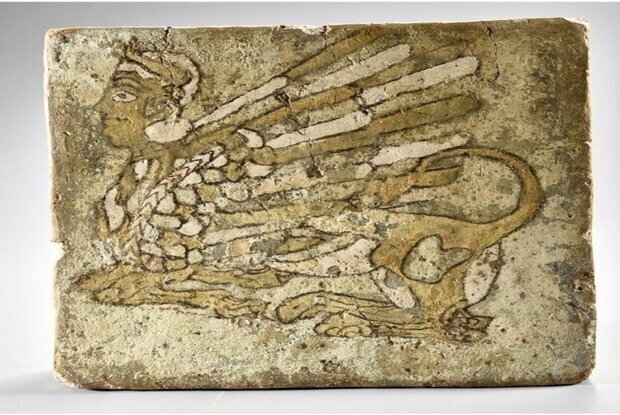Prehistorical artworks repatriated from Switzerland to go on show in Tehran

TEHRAN – A spectacular collection of decorated glazed bricks, once being looted and smuggled out of Iran some four decades ago, is scheduled to go on show at the National Museum of Iran in the near future.
A total of 49 of the glazed bricks were returned home from Switzerland last year while two other ones have been repatriated recently, ISNA reported on Friday.
Dating back to the 7th or 8th centuries BC, the bricks come from Qalaichi, one of the most important archaeological sites in western Iran, which is just north of the north-western city of Boukan, near the Iraqi border. Qalaichi was the capital of the Mannaean kingdom.
Moreover, a museum in Bukan is arranged to showcase the collection if the coronavirus situation will allow it, the news agency reported without providing more detail.
The decorated bricks have led to a reconsideration of Mannaean civilization since they show that its people were highly skilled artists. According to The Art Newspaper, the artworks were recovered from a warehouse in Switzerland. The 51 restituted glazed bricks, most just over one square foot in size, have a wide variety of motifs: winged lions and bulls with human heads, mythological figures, birds of prey, deer, and floral or geometric designs.
The artifacts are connected to the Mannai civilization, which was once flourished in northwestern Iran in the 1st millennium BC. Mannai, also spelled Manna, was an ancient country surrounded by three major powers of the time namely Assyria, Urartu, and Media.
According to the Encyclopedia Britannica, the Mannaeans are first recorded in the annals of the Assyrian king Shalmaneser III (reigned 858–824 BC) and are last mentioned in Urartu by Rusa II (reigned 685–645 BC) and in Assyria by Esarhaddon (reigned 680–669 BC). With the intrusion of the Scythians and the rise of the Medes in the 7th century, the Manneans lost their identity and were subsumed under the term Medes.
In the 1970s, a farmer plowing at Qalaichi came across a decorated brick, probably from the columned hall of its citadel. This discovery led to extremely damaging illegal excavations, partly using a bulldozer. Eventually, in 1985, there was an official rescue excavation, but this was quickly abandoned because of an intensification of the Iran-Iraq war. There were then 14 more years of illegal digging until 1999 when there was another official excavation. But by this time only small fragments of broken bricks were found.
In 1991, an Iranian antiquities dealer with a base in Switzerland contacted John Curtis, the British Museum’s keeper of the Middle East at the time, intending to sell a collection of Qalaichi bricks. Curtis traveled to a warehouse in Chiasso, very close to the Italian border. He warned the vendor that the bricks may have been illegally exported from Iran and advised that they should be returned. His advice was ignored.
Trouble in store
The bricks remained in Chiasso, but in 2008 the warehouse owners took action after the dealer’s storage bill had remained unpaid. The warehouse obtained authority to seize the contents and on finding the bricks, the Swiss authorities were alerted. Curtis, together with a London-based lawyer, Jeremy Scott, contacted Tehran’s National Museum, which submitted a formal request for their return.
The decorated bricks have led to a reconsideration of Mannaean civilization since they show that its people were highly skilled artists. Their designs also reveal a strong Assyrian influence, such as the human-headed winged bulls.
Curtis, now the academic director of the Iran Heritage Foundation, says that before the discovery of the bricks, “the richness of Mannaean civilization and its links with Assyria had not been appreciated”.
AFM
